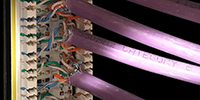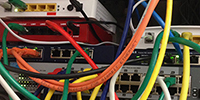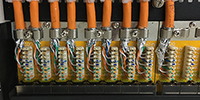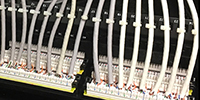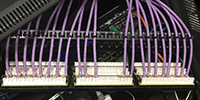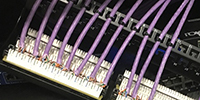On new restaurant and coffee shop site openings, the biggest mistake I encounter regarding the cabling is that insufficient cable runs are generally specified. It is really easy to quickly think what you need and pick a number out of your head. Far better to sit down and plan out exactly what devices will need to connect. Remember all the different devices telephones, tills, credit card machines, wireless access points and any other device requiring a wired network connection. Ideally you should also have some spare cable runs in key areas. This will enable emergency patch lead swap overs should cable runs fail in the middle of a shift, or worse, a busy weekend.
As well as having enough cable runs to service all equipment, always make sure you have cables run to areas where you might want to add in tills or phones at a later date. When setting up a restaurant it is relatively easy to add more cable runs. Within reason, it should not be significantly more expensive to cable for future expansion. Putting in cable runs after all the decoration has been done and the restaurant is open will be far more disruptive and expensive. Spend some time now and get things right first time. The above said, there is also no benefit to putting in vastly more cable runs than you will ever use. That will just incur extra costs for nothing. Whilst rare, I have seen this on numerous occasions.





